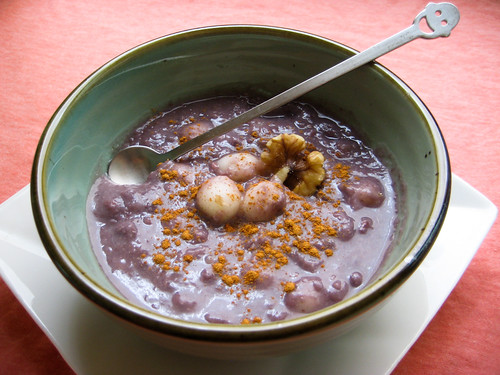
I finally tried making my very first danpatjuk! This Korean sweet red bean porridge takes me back to my childhood years when my mom would sometimes make this and try to get me to eat it, to no avail. I was a bean-hater back then and simply refused to eat them in any form, even when sweetened and blended/mashed beyond recognition. But now that I'm a total bean fanatic, I've been craving this porridge lately, even though it's not the season for it! Season shmeason~ I'll eat patjuk if and when I want to.
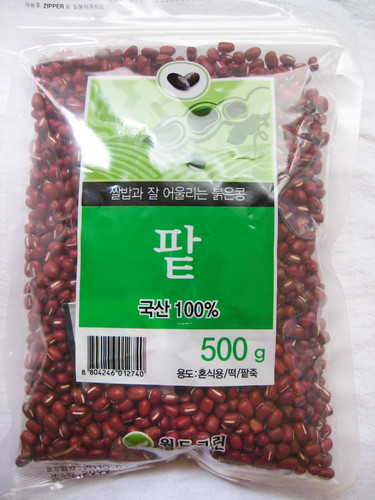
A package of dried 'pat' (red beans) from E-mart.
I looked through a bunch of different recipes online to get the general idea of what to do. In the end, I sort of just did my own thing. I think making patjuk is rather fool-proof, and you can adjust the amount of beans/water/sugar to make the porridge as thick, watery, sweet, or bland as you want. I actually didn't really measure anything out properly, but it still turned out pretty great.
Maangchi has a good recipe that you can follow, or you can just wing it like me. Here's a basic recipe for what I did:
{ Ingredients }
For the patjuk
1 cup dry pat beans
lots of water
around 1/4 cup dark brown sugar (totally adjustable)
1/2 tsp salt
cinnamon
walnuts for topping
For the rice balls
1/2 cup glutinous rice powder
a few tablespoons of hot water
1/2 Tbs white sugar
a pinch of salt
{ Method }
1. I soaked the dry 'pat' beans in water overnight. Some people don't bother with this step, but I like to soak my beans to get rid of some of the indigestible sugars. Soaking the beans also washes out some of the red color, so you end up with a lighter patjuk, compared to the very dark red-brown patjuk you might be used to.
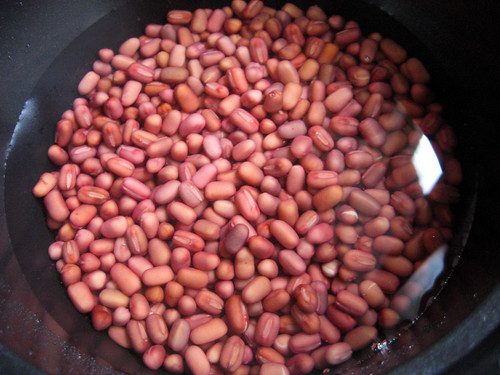
Here they are after being soaked and rinsed.
2. Rinse and drain the soaked beans. Add lots of water (5 cups?) and bring to a boil over high heat.
3. Once it is boiling, reduce to a simmer until the beans are fully cooked and mushy, about 50 minutes.
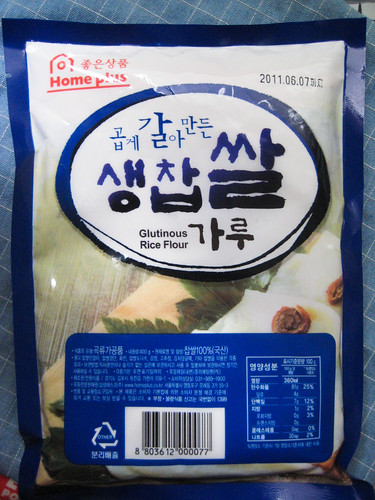
Glutinous rice flour
4. While the beans are cooking, measure out the rice powder, and add some white sugar (1/2 tbs?) and a pinch of salt.
5. Add some hot water to the rice powder, a tablespoon at a time, until you get a soft yet still somewhat dry texture- you don't want it to be too wet or it will stick all over your hands. Pull off small chunks and roll into mini balls.
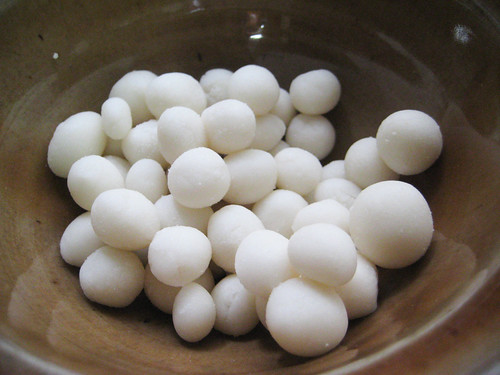
Koreans call these rice balls "bird eggs." These are eggs I have no problem eating. :)
6. Return to the beans and check to see if they're fully cooked. If you want some texture in your final porridge like me, spoon out some of the cooked beans into a separate bowl and set aside. With the remaining beans in the pot, use a blender to blend it all up. I used my hand-held immersion blender directly in the pot. Less clean-up! If it becomes too thick, add more water to your desired consistency.
7. Add the rice balls and gently stir. The porridge will continue to get thicker, so add more water if you like. The rice balls will be done cooking when they float to the top.
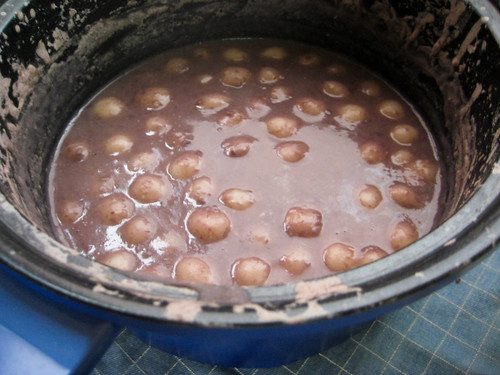
8. Add the non-blended beans that you set aside back into the porridge.
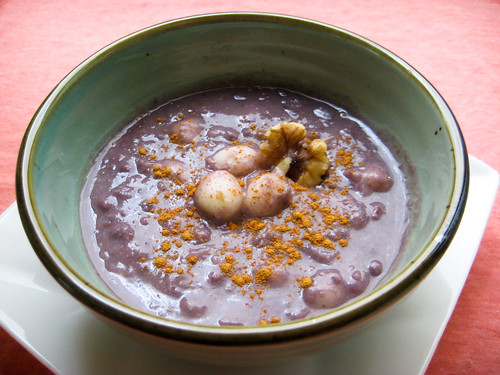
9. Serve hot or cold with a sprinkling of cinnamon and some pine nuts or walnuts.

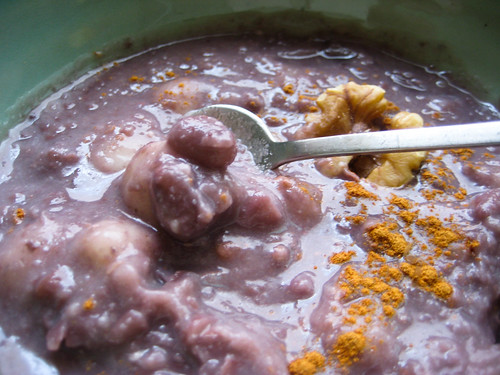
I love leaving some of the beans whole, for added texture and bite.
Honestly, the recipe is totally adjustable, according to how thick or sweet you want it. If you don't want any sugar at all, it can be completely eliminated for a healthier, more wholesome patjuk. If you don't want to roll out the rice balls, you could leave them out, or you could just throw in some rice powder directly into the porridge to thicken it up that way. Some people also just add some cooked white rice to it. Go ahead, add what you like, make it your own!